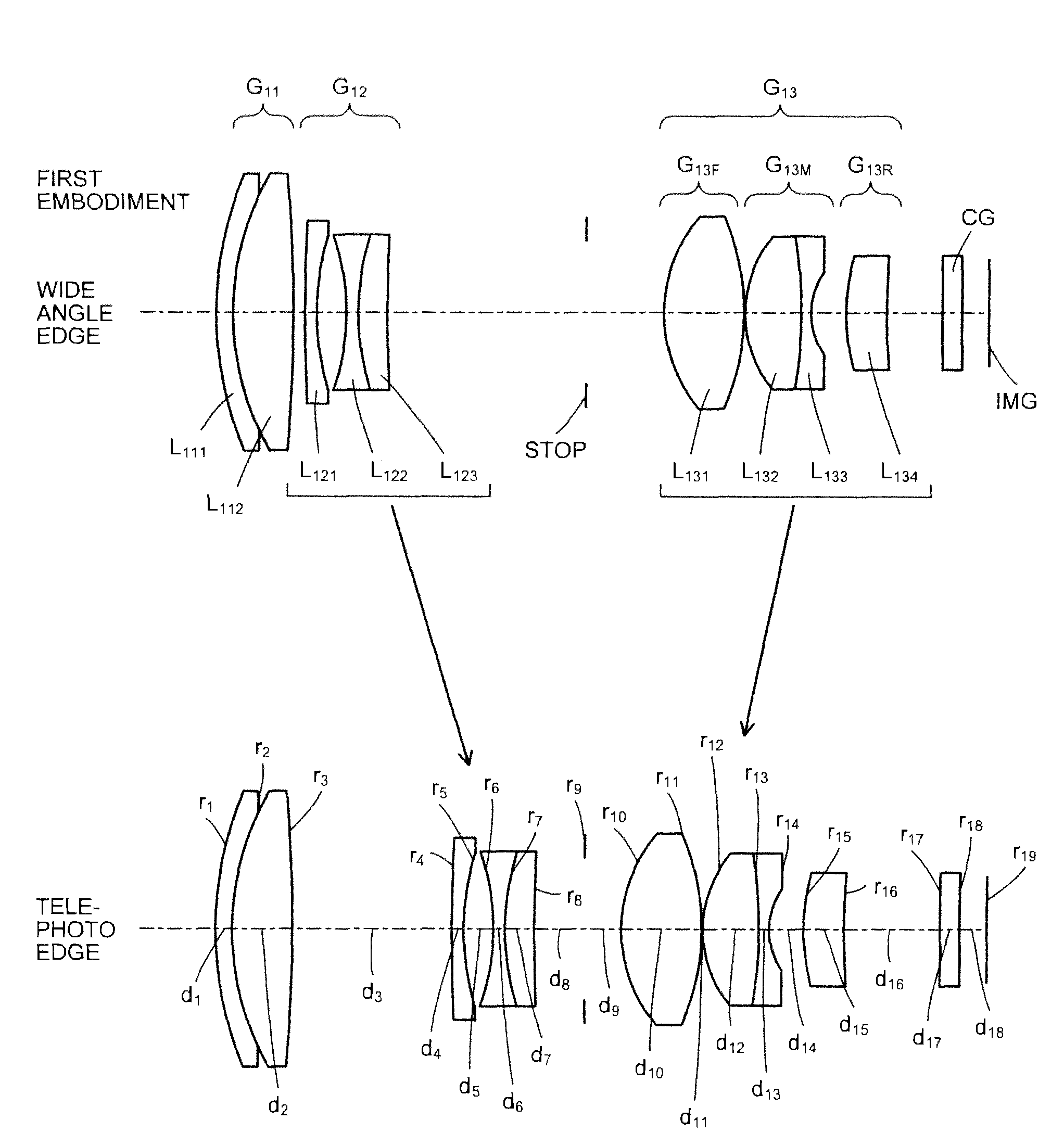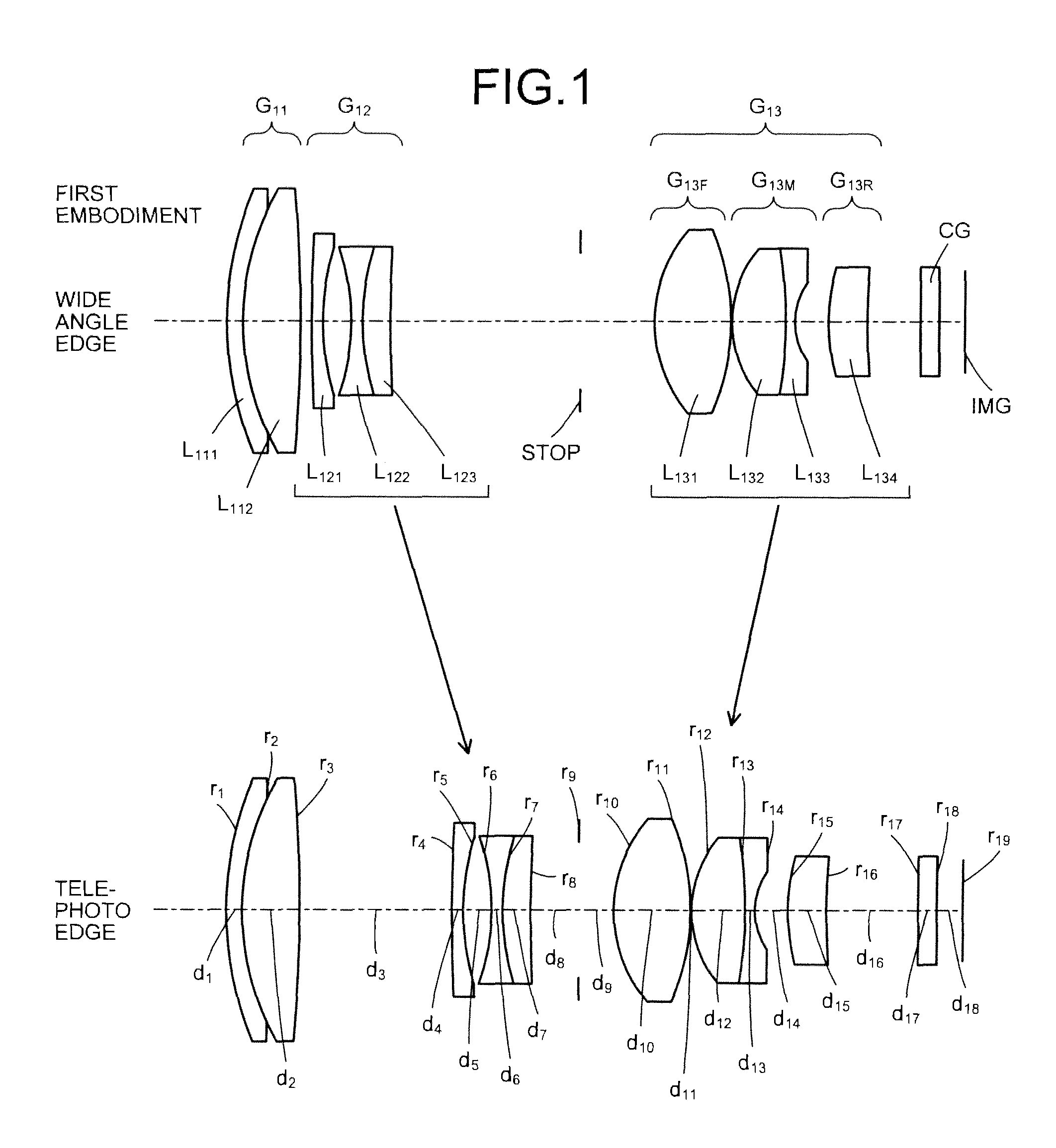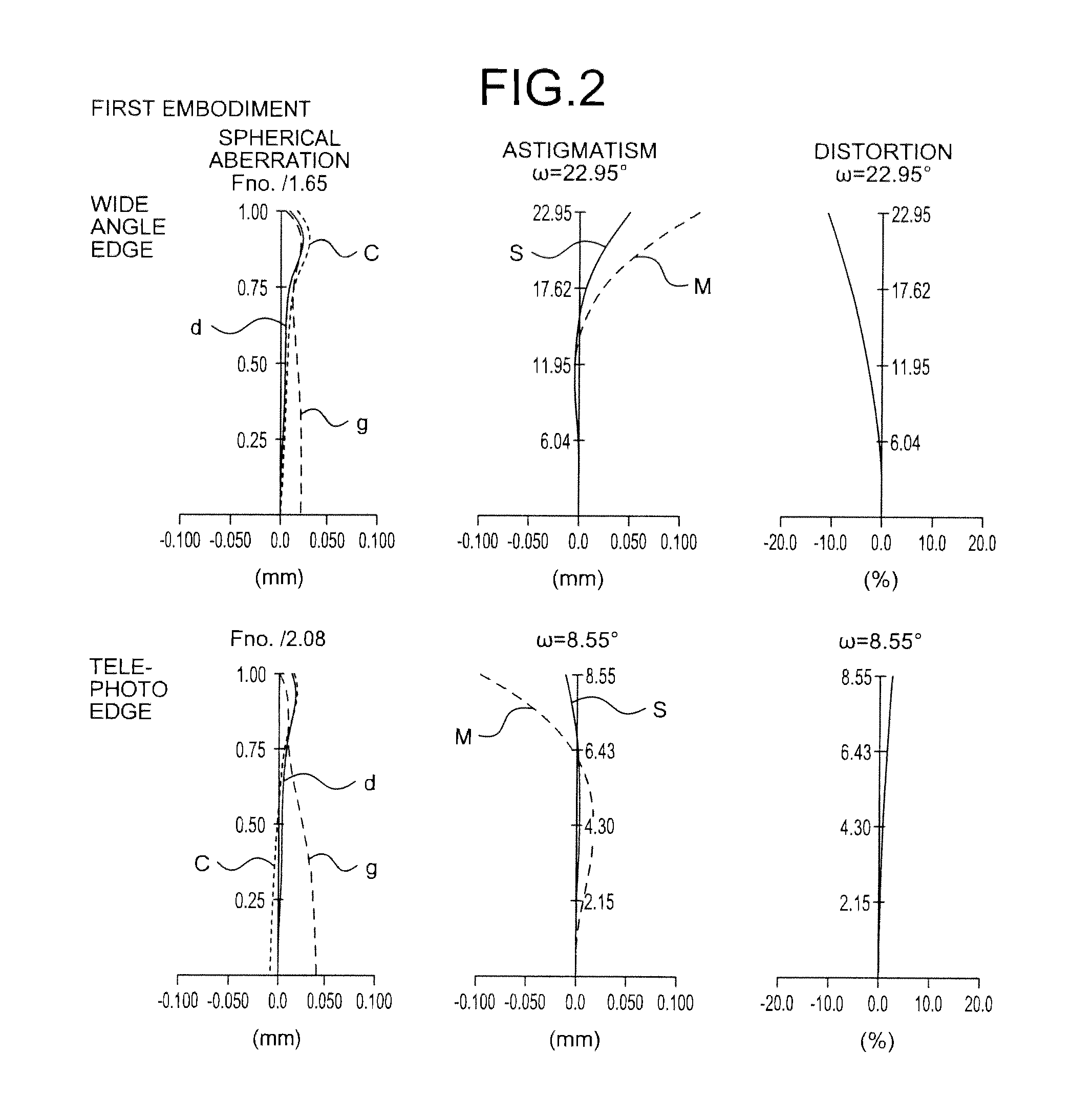Zoom lens
a zoom lens and zoom technology, applied in the field of zoom lenses, can solve the problems of inability to correct the aberration of near infrared light, the optical system is not suitable as an optical system, and the obtained image is out of focus
- Summary
- Abstract
- Description
- Claims
- Application Information
AI Technical Summary
Benefits of technology
Problems solved by technology
Method used
Image
Examples
first embodiment
[0054]FIG. 1 is a cross sectional view (along the optical axis) of the zoom lens according to a
[0055]The zoom lens includes sequentially from a non-depicted object (object side), a first lens group G11 having a positive refractive power, a second lens group G12 having a negative refractive power, an aperture stop STOP prescribing a given aperture, and a third lens group G13 having a positive refractive power. Between the third lens group G13 and an image plane IMG, a cover glass CG is disposed. The cover glass CG is disposed as necessary and may be omitted accordingly. At the image plane IMG, the light receiving surface of a solid state image sensor, such as a CCD and CMOS, is disposed.
[0056]The first lens group G11 includes sequentially from the object side, a negative lens L111 and a positive lens L112. The negative lens L111 and the positive lens L112 are cemented.
[0057]The second lens group G12 includes sequentially from the object side, a negative lens L121, a negative lens L12...
second embodiment
[0063]FIG. 3 is a cross sectional view (along the optical axis) of the zoom lens according to a The zoom lens includes sequentially from a non-depicted object (object side), a first lens group G21 having a positive refractive power, a second lens group G22 having a negative refractive power, the aperture stop STOP prescribing a given aperture, and a third lens group G23 having a positive refractive power. Between the third lens group G23 and the image plane IMG, the cover glass CG is disposed. The cover glass CG is disposed as necessary and may be omitted accordingly. At the image plane IMG, the light receiving surface of a solid state image sensor, such as a CCD and CMOS, is disposed.
[0064]The first lens group G21 includes sequentially from the object side, a negative lens L211 and a positive lens L212. The negative lens L211 and the positive lens L212 are cemented.
[0065]The second lens group G22 includes sequentially from the object side, a negative lens L221, a negative lens L22...
third embodiment
[0071]FIG. 5 is a cross sectional view (along the optical axis) of the zoom lens according to a The zoom lens includes sequentially from a non-depicted object (object side), a first lens group G31 having a positive refractive power, a second lens group G32 having a negative refractive power, the aperture stop STOP prescribing a given aperture, and a third lens group G33 having a positive refractive power. Between the third lens group G33 and the image plane IMG, the cover glass CG is disposed. The cover glass CG is disposed as necessary and may be omitted accordingly. At the image plane IMG, the light receiving surface of a solid state image sensor, such as a CCD and CMOS, is disposed.
[0072]The first lens group G31 includes sequentially from the object side, a negative lens L311 and a positive lens L312. The negative lens L311 and the positive lens L312 are cemented.
[0073]The second lens group G32 includes sequentially from the object side, a negative lens L321, a negative lens L32...
PUM
 Login to View More
Login to View More Abstract
Description
Claims
Application Information
 Login to View More
Login to View More - R&D
- Intellectual Property
- Life Sciences
- Materials
- Tech Scout
- Unparalleled Data Quality
- Higher Quality Content
- 60% Fewer Hallucinations
Browse by: Latest US Patents, China's latest patents, Technical Efficacy Thesaurus, Application Domain, Technology Topic, Popular Technical Reports.
© 2025 PatSnap. All rights reserved.Legal|Privacy policy|Modern Slavery Act Transparency Statement|Sitemap|About US| Contact US: help@patsnap.com



